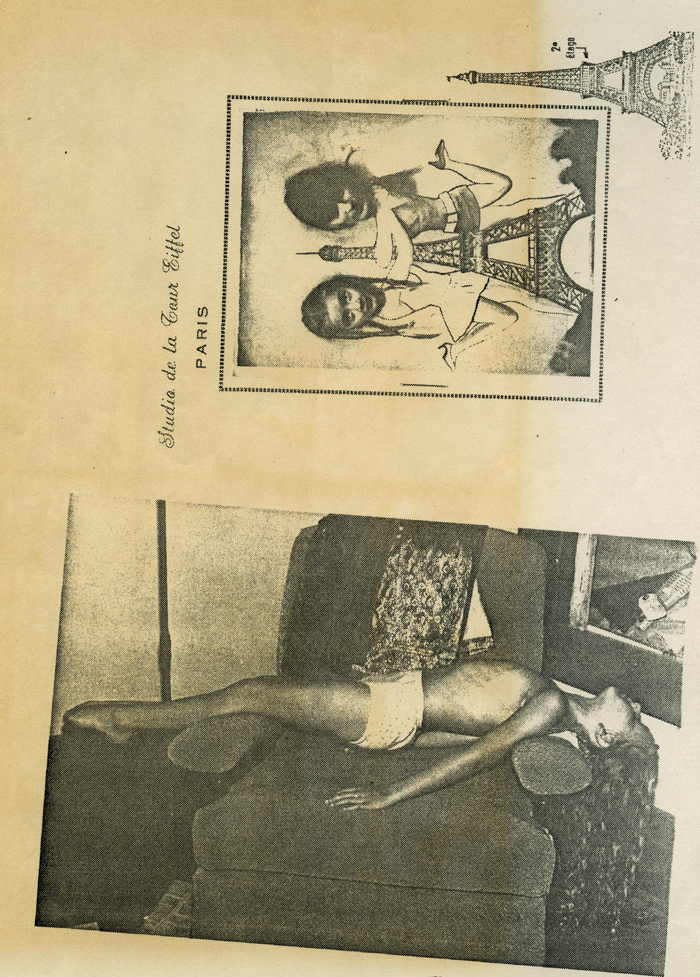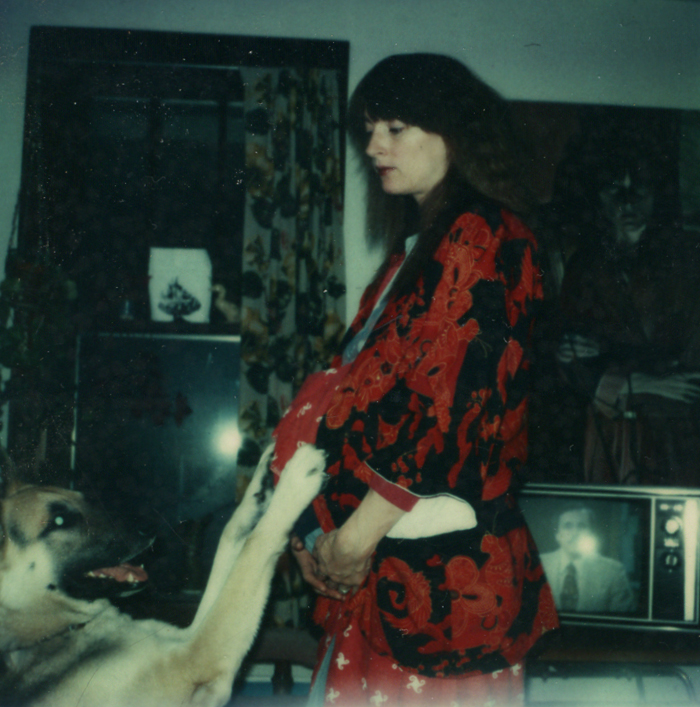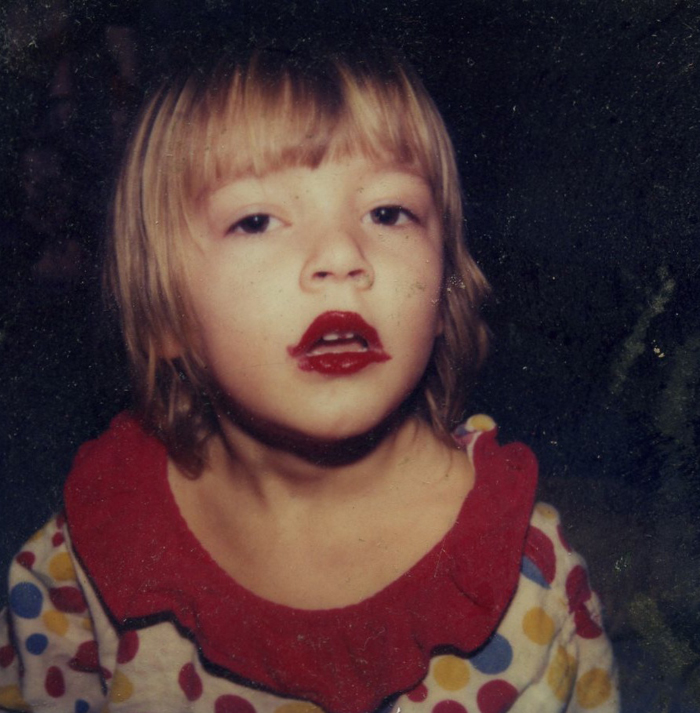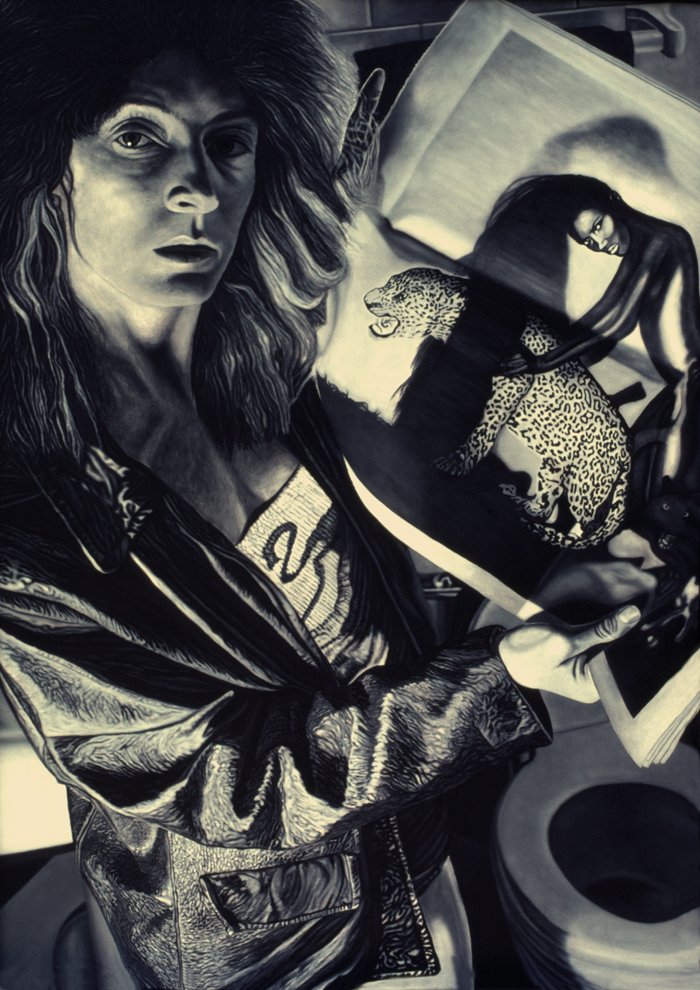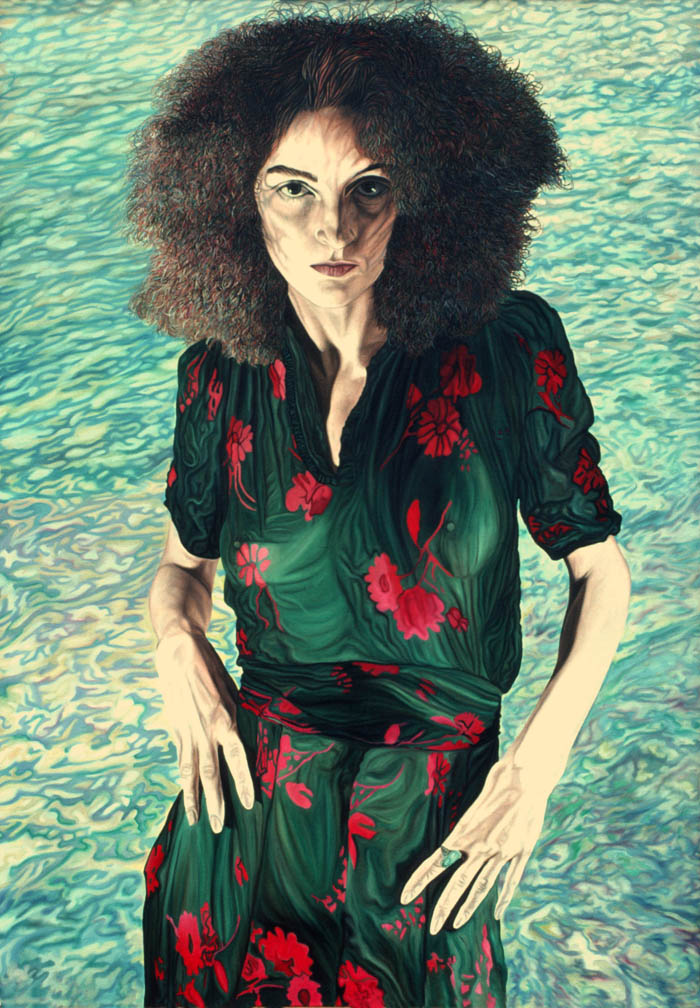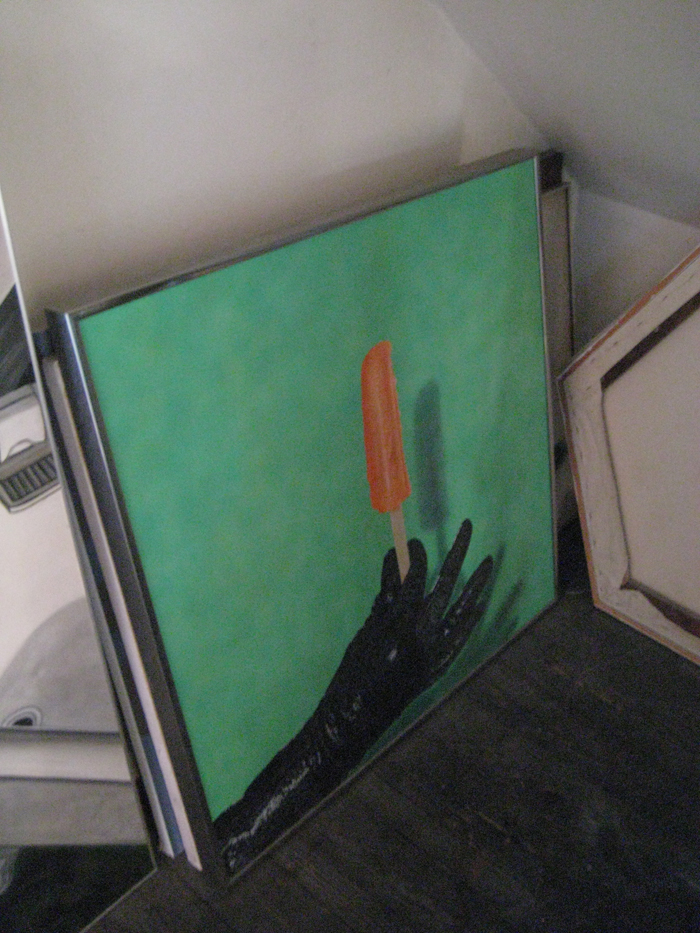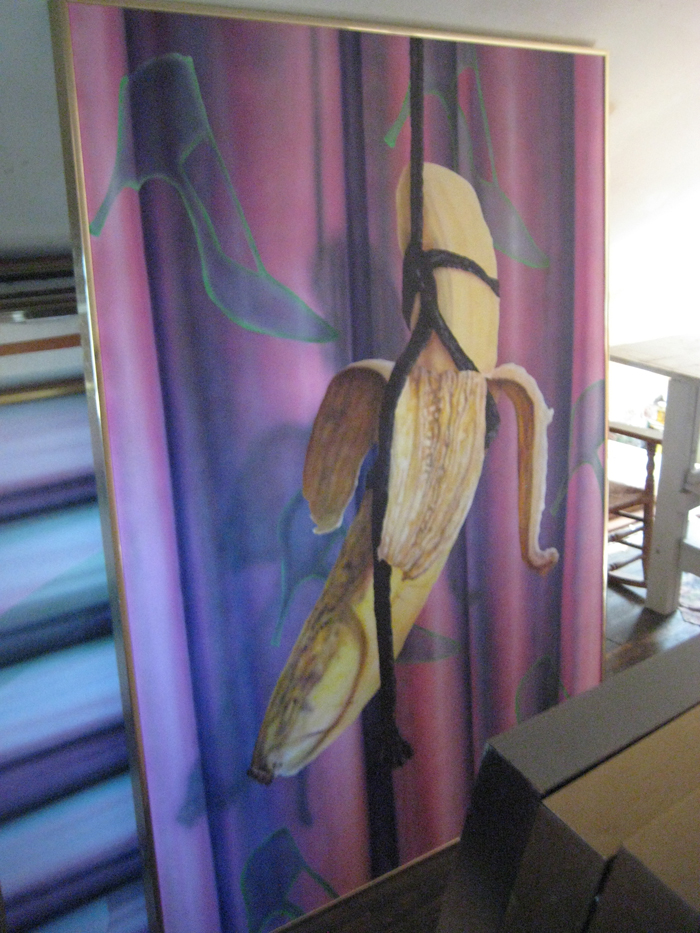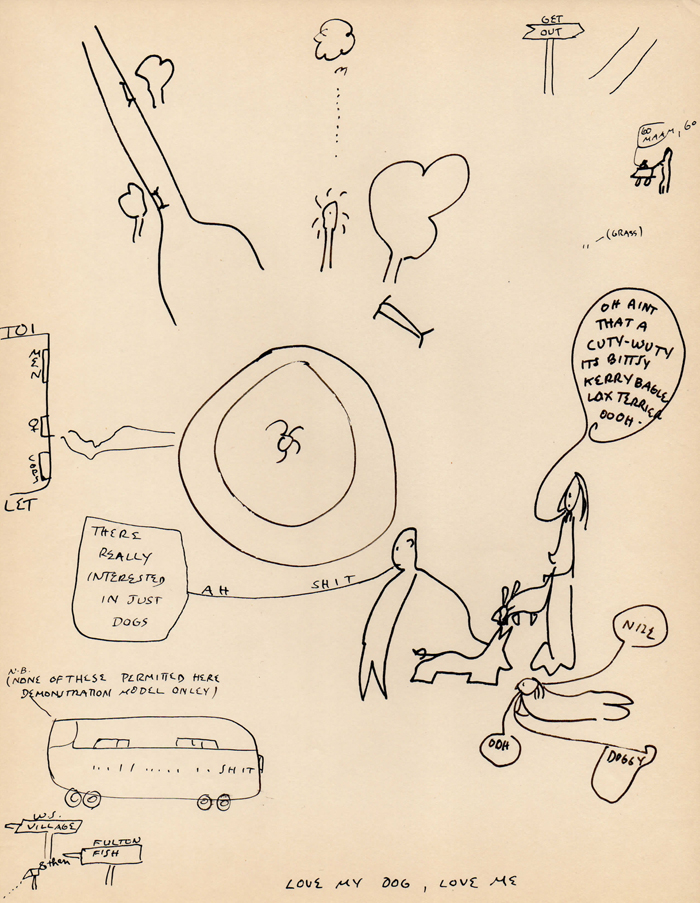JOSH BRAND
— In the past eight years I’ve spent a lot of time in Columbus, Ohio, at the home of Bernard and Linda Beck. Bernard and Linda’s house is a record of their life together – it is full of emotional portraits they’ve made of each other and of themselves, as well as portraits (of self, mother, father) by their daughter Bianca. Their house was formerly a duplex, so it has a nearly symmetrical structure – every room has its double on the other side. This doubling is continued and amplified throughout the house as the family members are mirrored and echoed in various portraits.
This is a song that Linda recorded in the eighties with Eric Shinn and Lucy Jimison:
And these are some more of Bernard’s paintings:
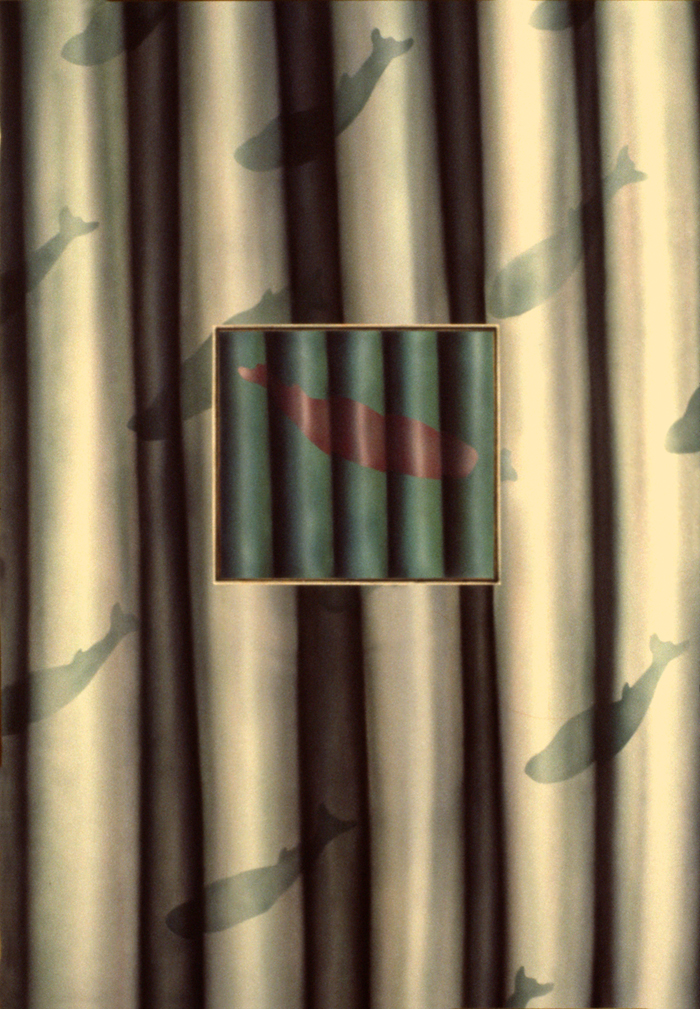
The initial impact of Bernard’s paintings is strong and sudden. As objects and images they often appear to be quite blunt or direct – their space is compressed, their subjects are immediately and centrally present, their colors and contrast are vivid and clear – but over time this frankness is transformed into something else: a chain of questions. “How did this painting come to be? What space is this? Where am I now and how with these figures, these things?” The paintings grow in my mind and in front of me, becoming gradually more potent and more fascinating.
The language in Linda’s songs is always clear and classical and intense. The songs themselves are formally and sonically seductive – alive and catchy, full of beguiling musical details – yet within them I am slowly led to the same sorts of questions and sensations that I find in Bernard’s paintings. I become gently disoriented, even in the midst of familiar words and feelings and musical structures. In Linda’s songs (as in Bernard’s paintings) things are always somewhat strange to begin with, but this strangeness changes and vibrates in new ways as time is spent within it.
For the past year Bianca and I have been staying in the home of Tuli Kupferberg and Sylvia Topp. Tuli was an artist and poet and performer – he was involved in a lot of wild and intelligent and positive things in his life, but he’s best known for his activities as a member of the band The Fugs. He passed away in 2010 and left behind an apartment full of books, as well as an archive of writings, drawings, and recordings of various sorts. Tuli’s daughter Samara and her boyfriend Brendan have been organizing all these things for a while now, but when they moved to Maine last year no one was living in the apartment, so Samara asked us if we’d like to stay here.
This is a recording that Tuli made sometime close to the end of his life:
One night Samara, Brendan, Bianca, and I were listening to some of Tuli’s cassette tapes and we found this song. Tuli would record one song idea at the beginning of a cassette and leave the rest of the tape blank. A lot of his songs are about mortality, so this relationship between song and silence is both apt and intense. It was amazing that night to hear Tuli’s voice come so roughly to life and then slip abruptly into the hiss of blank tape.
While we’ve lived here I’ve also thought a lot about these drawings that Tuli made in the fifties. It’s hard to grasp them by saying what they are – they resemble simultaneously journals and poems, cartoons and jokes, stories and notations. They are all these things, drawn out in an elliptical near-narrative way. Each one is a time warp – spending time with them is similar to the experience of living here in this apartment that feels like another, lost version of New York. I look at these drawings and wonder “Is this what life was like then? Is it like this now?”
Josh Brand was born in 1980 in Elkhorn, Wisconsin. He lives and works in New York City, where his art was included in the 2010 Whitney Biennial. One-person exhibitions of Brand’s photographs have been presented at White Columns, NY; Herald St, London; and Misako & Rosen, Tokyo. His most recent show was “Nature” at Herald St in January 2012. He is a member, with Richard Aldrich, Peter Mandradjieff, and Zak Prekop, of the band Hurray.





